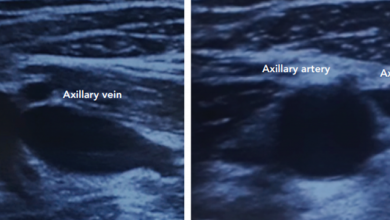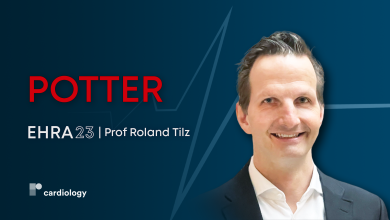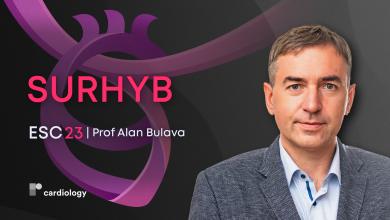Search results
Author(s):
Mark Young Lee
,
Srinath Chilakamarri Yeshwant
,
Sreedivya Chava
,
et al
Added:
3 years ago
Aortic stenosis (AS) is the most common valvular heart disease in industrialised countries with a prevalence of about 5 % in the general population aged greater than 75 years. During the past decade, transcatheter aortic valve replacement (TAVR) has emerged as a valuable, minimally invasive treatment option for patients presenting with symptomatic severe AS, who due to their advanced age and…
View more
Author(s):
Francis E Marchlinski
Added:
3 years ago
Catheter-based Mapping to Characterise Ventricular Tachycardia
Catheter-based mapping of the left ventricle (LV) to characterise the substrate and origin of ventricular tachycardia (VT) was thought to involve a much greater level of risk and therefore not to be pursued. Mark proved the naysayers wrong with his careful and methodical approach to evaluating the LV endocardium.
What made these…
View more
Author(s):
Ana Paula Tagliari
,
Adriano Nunes Kochi
,
Bernardo Mastella
,
et al
Added:
3 years ago
Cardiac implantable electronic devices (CIEDs), including permanent pacemakers (PPMs), ICD and CRT devices, are the mainstream therapy for many potentially lethal heart conditions, such as advanced atrioventricular block or sustained ventricular tachycardia or fibrillation. CIEDs can be implanted through endovascular or epicardial routes, with the former used the most because it is less invasive…
View more
Author(s):
Ethan R Ellis
,
Mark E Josephson
Added:
3 years ago
Cardiomyopathies are heterogeneous heart muscle disorders with a wide range of aetiologies and clinical manifestations. They are often defined by their causes (i.e. hypertension, prior myocardial infarction, valvular heart disease), although current major society definitions describe cardiomyopathy as the presence of abnormal myocardial structure and/or function in the absence of underlying…
View more
Author(s):
Roland R Tilz
Added:
1 year ago
EHRA 23 - In this short interview, Prof Roland Tilz (University Heart Centre Lübeck, DE) outlines the findings from the POTTER registry.
The POTTER Registry (NCT05273645) gathered data on patients undergoing pulmonary vein isolation (PVI) with a rare complication, atrio-oesophageal fistula (AOF). The registry focuses on the incidence, diagnosis and management of this complication, which affects…
View more
ESC 23: The SurHyb Trial
Author(s):
Alan Bulava
Added:
7 months ago
Video
Author(s):
Adryan A Perez
,
Frank W Woo
,
Darren C Tsang
,
et al
Added:
3 years ago
The use of cardiovascular implantable electronic devices (CIEDs) has increased dramatically, with approximately 1.2–1.4 million CIEDs implanted annually worldwide.1 In the US alone, there are more patients with CIEDs than registered nurses.2,3 CIEDs use leads that connect a generator to cardiac tissue to treat patients with many conditions including symptomatic bradycardia, morbid tachycardia…
View more
Author(s):
Klaus-Jürgen Gutleben
,
Henrik Fox
,
Thomas Bitter
,
et al
Added:
3 years ago
Implantable cardiac devices, such as pacemakers, are used to treat a number of heart conditions, especially those related to the electrical conduction system. Cardiac pacemakers are a well-established and effective therapy, and have been in use for more than 50 years.
The first pacemaker was implanted in a patient in October 1958 by Åke Senning in Stockholm, in cooperation with engineer Rune…
View more
Author(s):
Francisco G Cosio
Added:
3 years ago
The term ‘flutter’ was coined to designate the visual and tactile rapid, regular atrial contraction induced by faradic stimulation in animal hearts, in contrast with irregular, vermiform contraction in atrial fibrillation (AF).1,2 On the ECG, flutter was a regular continuous undulation between QRS complexes at a cycle length (CL) of ≤250 ms (≥240 bpm). Slower tachycardias displaying discrete P…
View more














 « First
« First